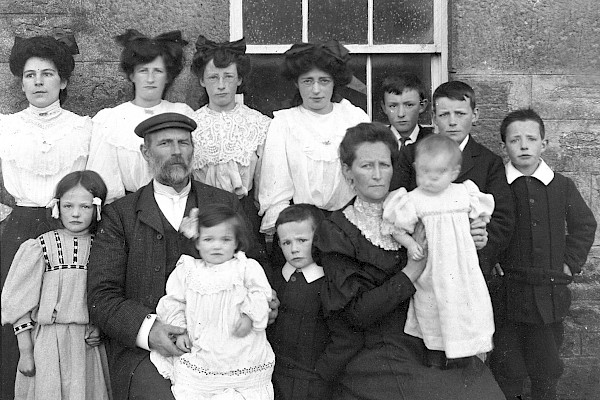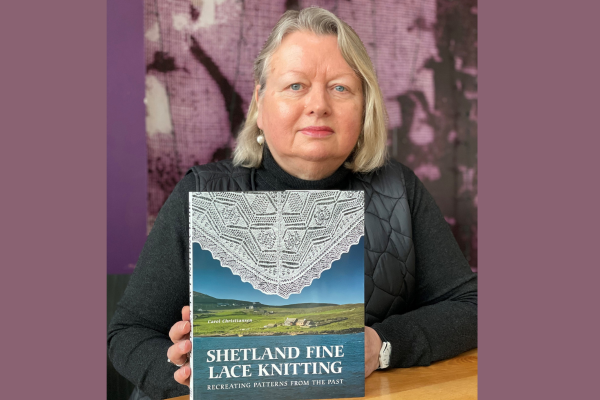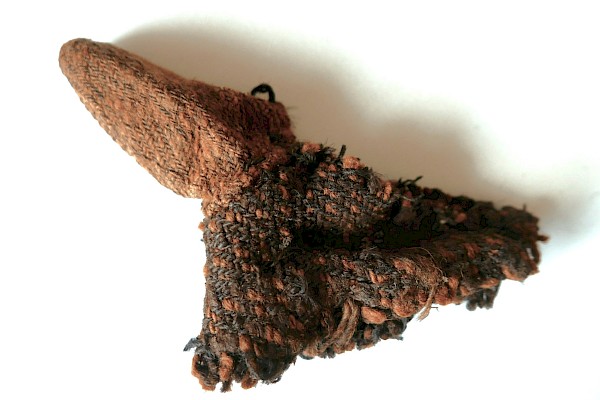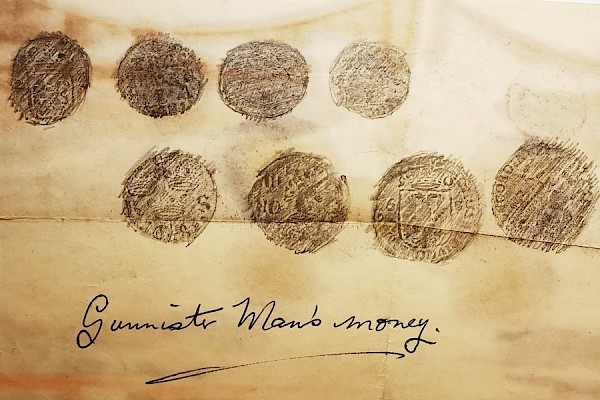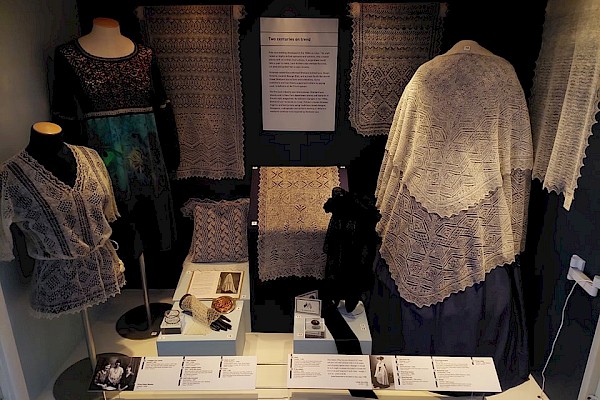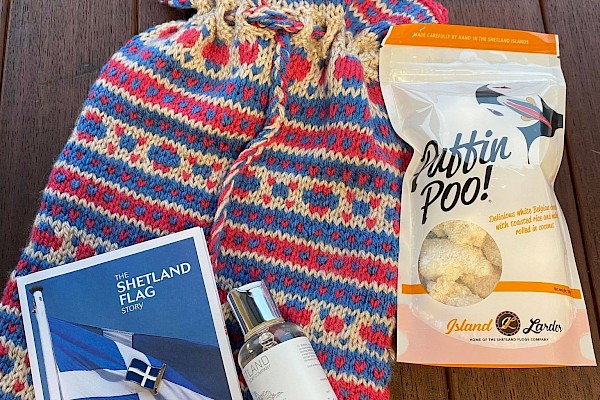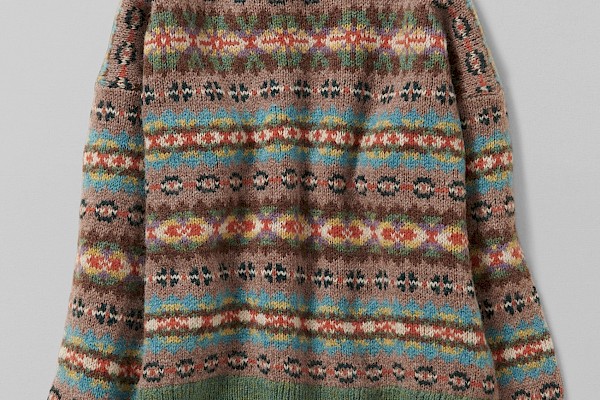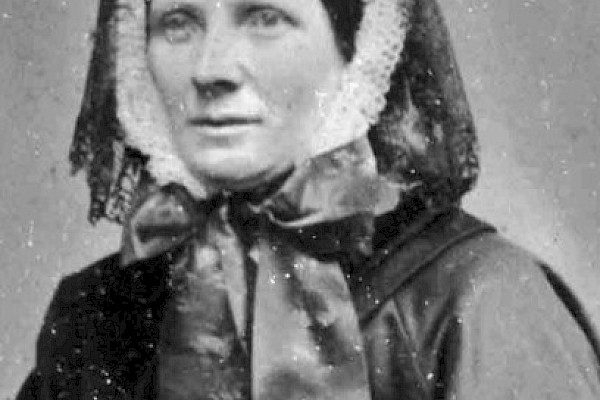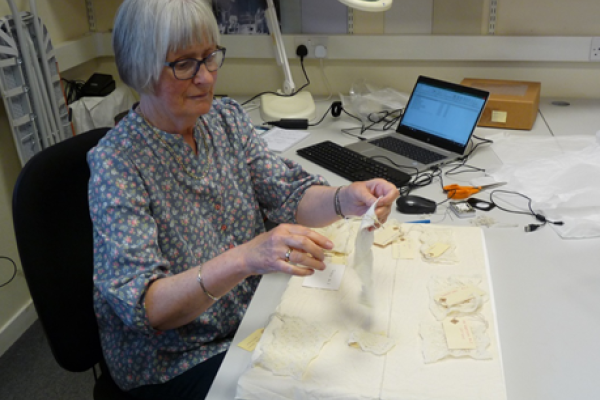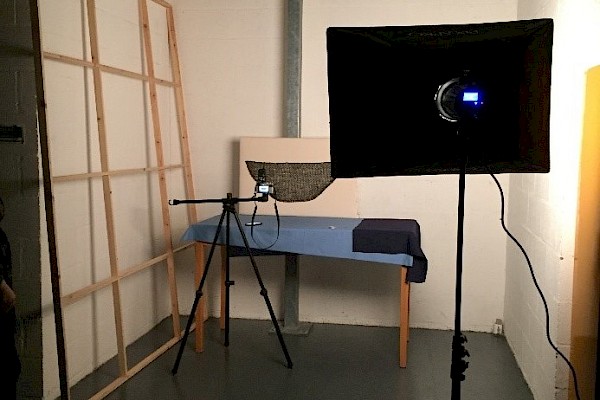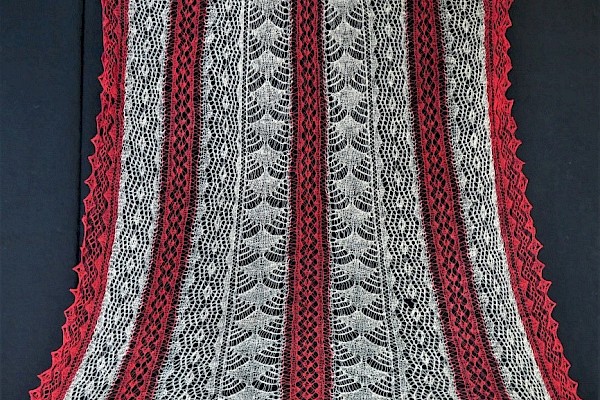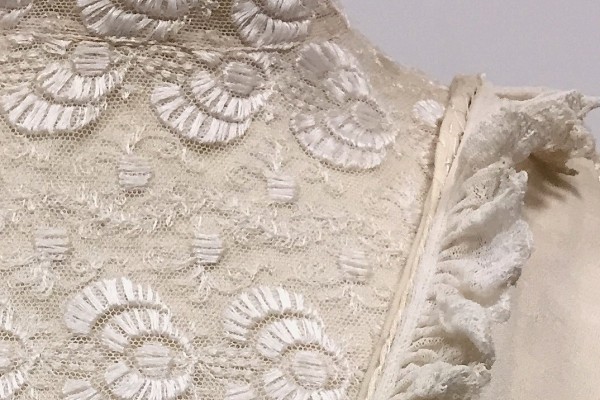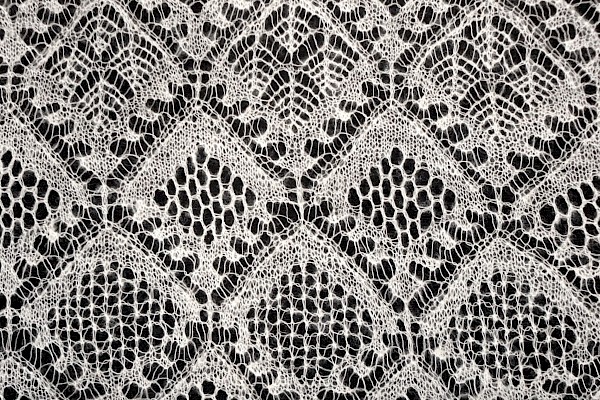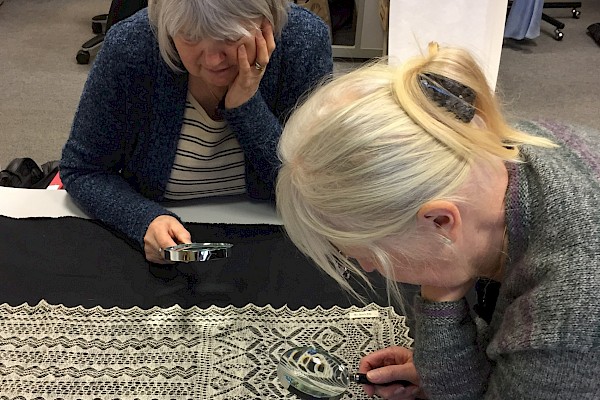The Seductiveness of Fine Knitted Lace Blouses
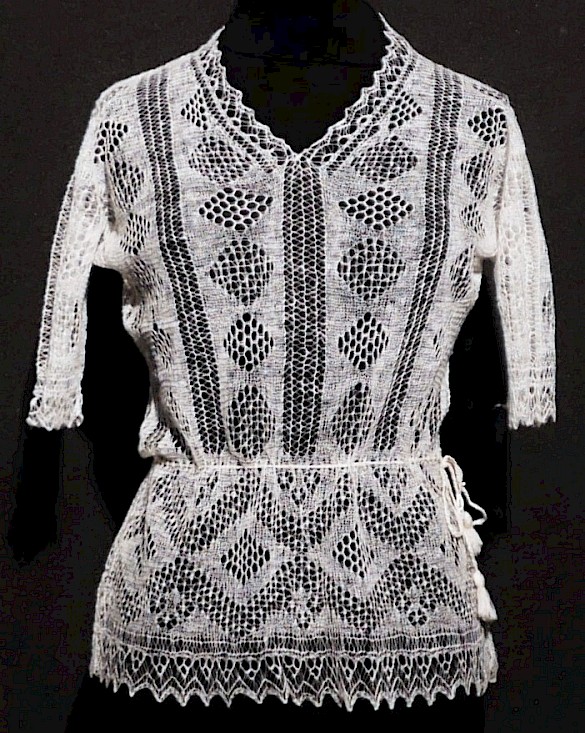
It’s a sad fact that after working with hundreds of examples of Shetland fine knitted lace over the years, it takes something very special to catch my eye. When a box arrived in the post some months ago as a potential donation, three pieces literally took my breath away. They were the most exquisite examples of the craft I have seen, and unusually, they were in the form of blouses. I said ‘yes, please’ to the donor.

Teenie Williamson of Fetlar in black Print o’ Da Wave pattern blouse, with draw-string waist and ¾-length sleeves (left). Agnes Dalziel in tunic-style blouse (right). The side panels and sleeves have the same linear and diamond pattern as the blouse pictured with the jabot, below.
When women’s fashion changed dramatically in the 1920s from the corseted Edwardian period, blouses made in Shetland fine knitted lace grew in popularity. They were modern, feminine, and daring because of their extreme fine, openwork fabric. The blouses required a lining, camisole or other garment underneath for modesty but they verged on provocativeness nonetheless, in a way that stoles and shawls did not. Finer blouses could be worn with a suit, so that only a hint of laciness was visible. Others were worn simply over a skirt. Many were tunic-style and others had cinched waists with tasselled drawstrings. The blouses modernised the craft of Shetland fine knitted lace and proved it could respond to contemporary fashion, even if it incorporated patterns used in shawls since the 1840s.
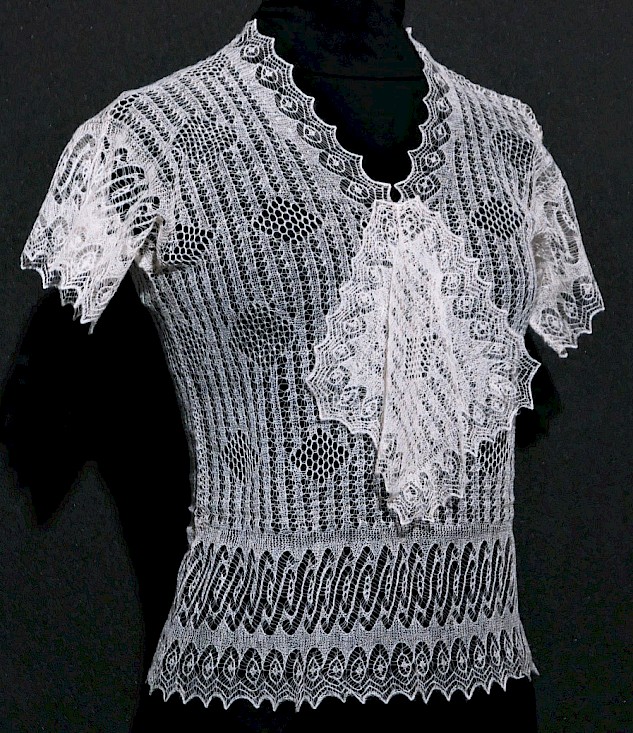
Blouse with jabot. It has a gauge of 56 stitches and 70 rows per 10 cm and weighs 18.2 grams (0.64 oz.).
The three recently donated blouses are short-sleeved and V-neck, with pointed lace edging at the neckline, sleeves and lower hem. Two blouses have jabots incorporating the same patterns, fashioned as separate squares sewn to the neckline at one corner, allowing the jabot to flounce diagonally.
The fineness and evenness of the two-ply yarns are perhaps the most striking features. Only the most specialised and accomplished spinners could create wool yarn so consistently and extremely fine. This yarn requires expert wool selection and preparation because it must be spun extremely fine but remain strong and somewhat elastic to cope with the strain as the body moves.
Another noticeable feature is the array of unusual patterns. Here and there are recognisable, common patterns like lace hole diamonds, but there are zig-zag, wavy and oval patterns I have not seen before in Shetland lace. The motifs will require study, charting and sampling by Anne and Kathleen, our Craft Specialists. Possibly they were created to appeal to the modernity of well-heeled customers of fine knitted blouses. Indeed, Shetland lace jumpers and camisoles were selling in London at Harrods and other exclusive shops and noted in the French edition of Vogue by 1925 (Chapman, 2015, pp. 164,176).
The three blouses were made with similar techniques. The lower bodice was worked as a long strip, the ends sewn together to create a round band. The stitches of the main bodice were picked up along the band’s flat edge and knitted up, in the round. The garment was worked flat at the neck to shoulders, which were joined by binding off together the live stitches of the front and back shoulders. Where the sleeves were the same design as the lower edge, as in the blouse pictured, the sleeves were knitted back and forth as a strip, at the same time they were knitted to the armhole edge, then seamed at the underarm. All of these techniques ensured the fabric was as smooth and light as possible and the patterns were not visually interrupted by seams. The blouse pictured weighs 18.2 grams (0.64 ounces). The gauge is 56 stitches and 70 rows over 10 cm.
The blouses were invariably made by members of the Sutherland family, probably jointly, with separate spinner and knitter, most likely sisters Ann and Johann Sutherland, originally from Unst but living in Lerwick by the 1930s.
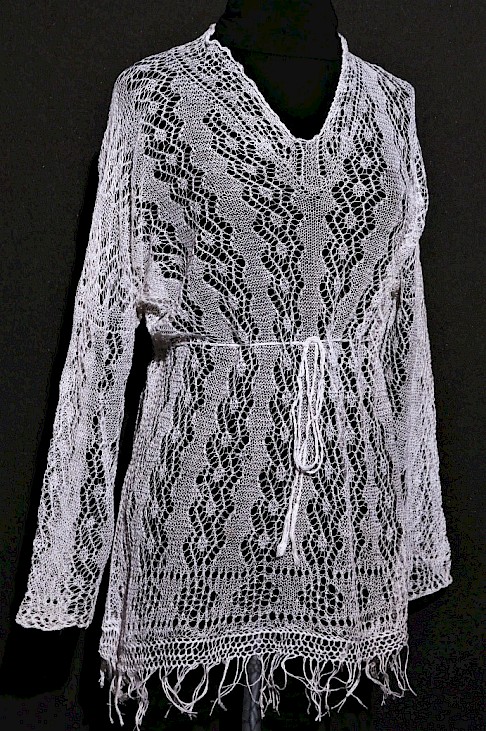
Tunic-style lace blouse knitted in cotton. Made in Gerrigarth, Unst, as a wedding gift to a local bride, 1921.
Few of these blouses now exist. Indeed, until recently we had only three lace pullovers for children. Several new donations mean we now have six women’s blouses. All of them were probably made in Unst or by lace-makers from Unst. They required good design skills because of the required shaping. But like all Shetland lace, a blouse was meant to be seen against a contrasting background, to show off the patterns and the fineness of the wool. These blouses achieve that, and draw attention to a woman’s body in a way that was unthinkable only a decade before.
Chapman, R. 2015. The history of the fine lace knitting industry in nineteenth and early twentieth century Shetland. PhD thesis, University of Glasgow. https://theses.gla.ac.uk/6763/
